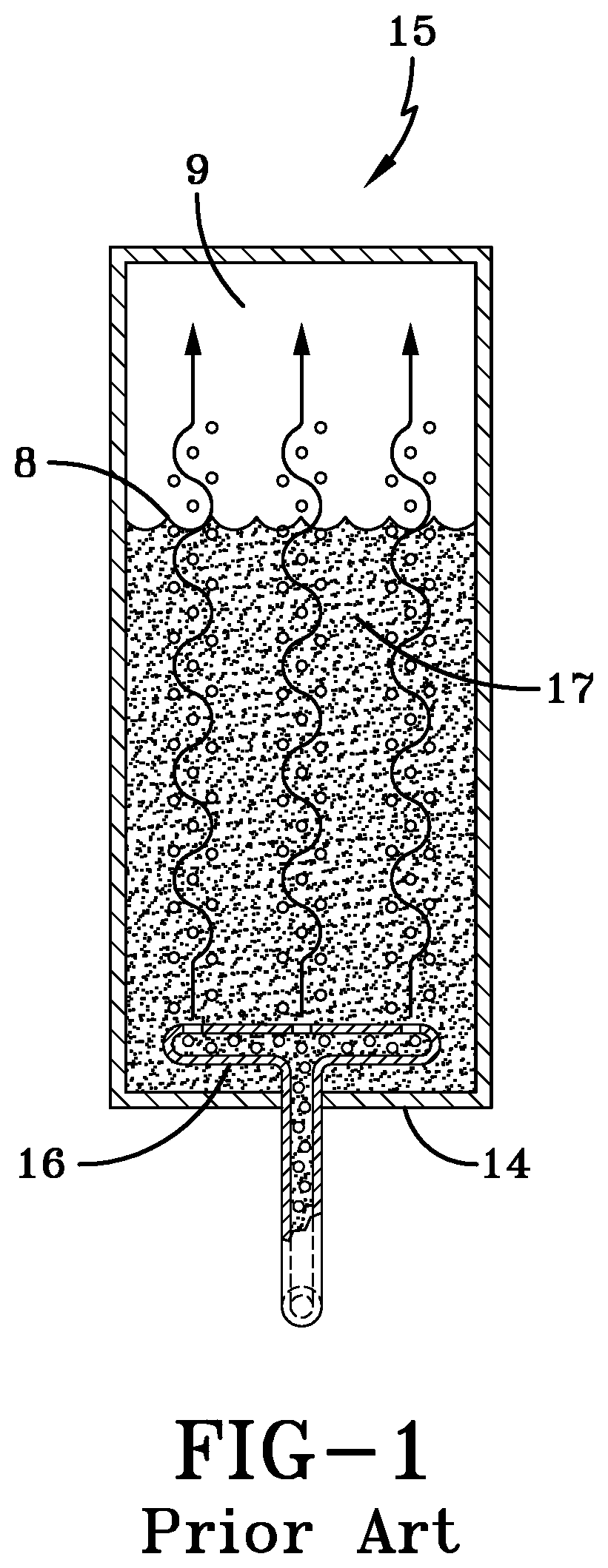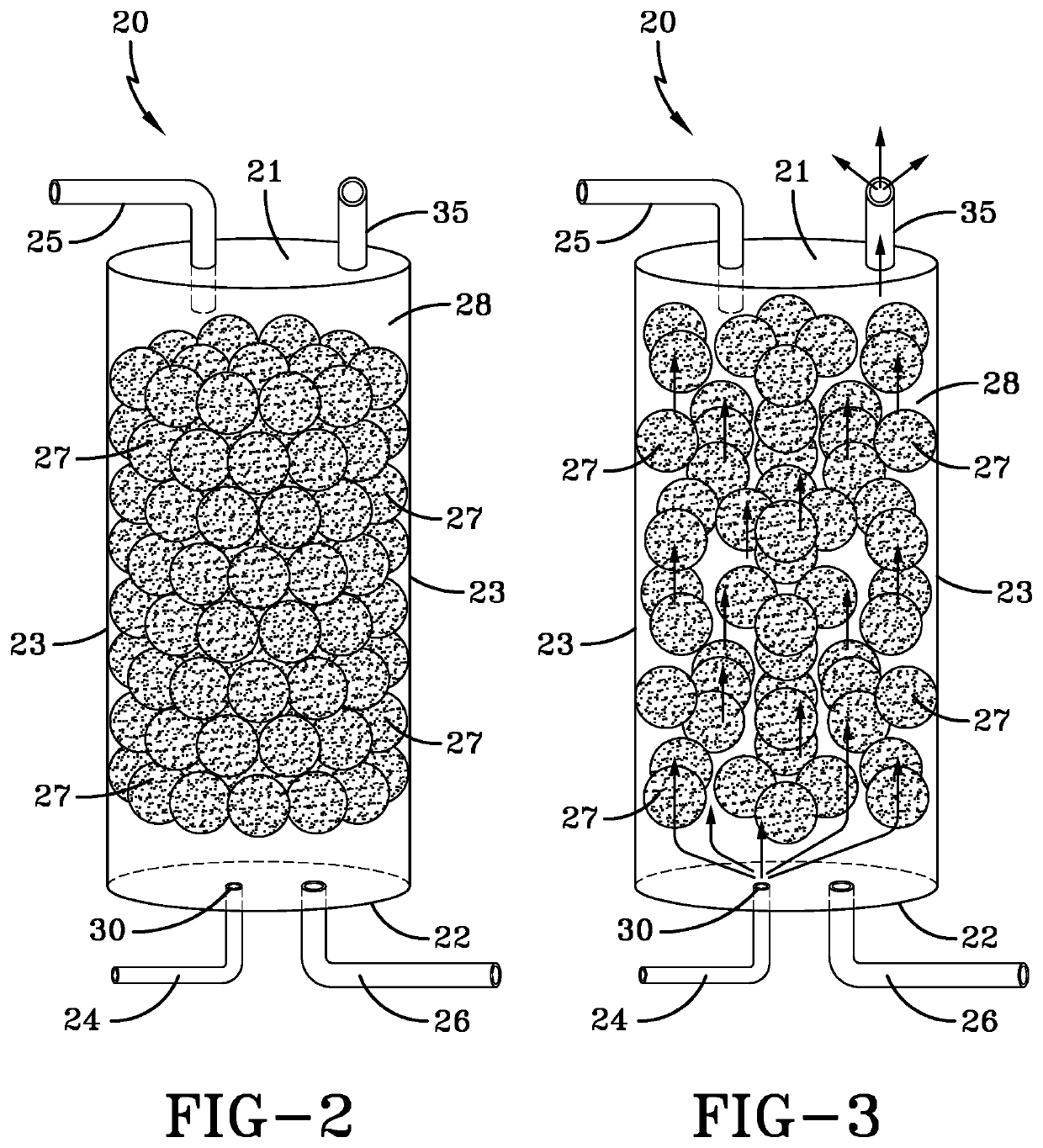Utilizing packed columns for asphalt air blowing
a technology of air blowing column and asphalt, which is applied in the direction of chemical/physical/physical-chemical processes, chemical apparatus and processes, chemical/physical processes, etc., can solve the problems of limited mass transfer rate of conventional asphalt oxidation techniques, and the rate of chemical reactions occurring within the blow still is known to be limited, so as to improve reduce air bubble size , the effect of improving the dispersion of air bubbles
- Summary
- Abstract
- Description
- Claims
- Application Information
AI Technical Summary
Benefits of technology
Problems solved by technology
Method used
Image
Examples
examples 1-4
[0040]This series of experiments was conducted in a lab scale blow still which was approximately 1.3 feet tall and which had a diameter of 0.35 feet. The blow still used in Example 1 was conventional in that it was not compartmentalized into different oxidization sections and was not packed with any packing material. However, in the other experimental runs (Examples 2-4) the blow still was of the design illustrated in FIG. 2 and was partially packed with ball bearings.
[0041]The asphalt used as the starting material in all of these experiments had an initial penetration value which was within the range of 250 dmm to 400 dmm as measured at 77° F. In all cases the air blow temperature was held constant at 500° F.±5° F. The effect that the packing had on the oxidization of the asphalt can be seen by reviewing Table 1.
[0042]
TABLE 1AirFinalBlowAir BlowingSofteningPEN atBlowProcessStillBlowingTimePoint77° F.LossExampleTypePackingAccelerantAir Flow Rate(Minutes)(° F.)(dmm)(%)1BatchNoNo50 g2...
PUM
| Property | Measurement | Unit |
|---|---|---|
| temperature | aaaaa | aaaaa |
| softening point | aaaaa | aaaaa |
| softening point | aaaaa | aaaaa |
Abstract
Description
Claims
Application Information
 Login to View More
Login to View More - R&D
- Intellectual Property
- Life Sciences
- Materials
- Tech Scout
- Unparalleled Data Quality
- Higher Quality Content
- 60% Fewer Hallucinations
Browse by: Latest US Patents, China's latest patents, Technical Efficacy Thesaurus, Application Domain, Technology Topic, Popular Technical Reports.
© 2025 PatSnap. All rights reserved.Legal|Privacy policy|Modern Slavery Act Transparency Statement|Sitemap|About US| Contact US: help@patsnap.com



